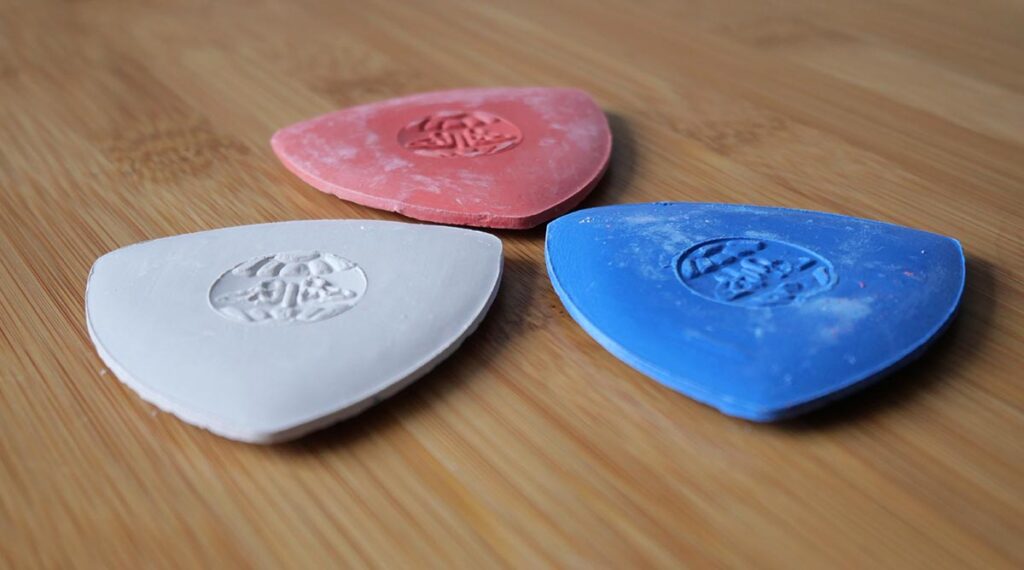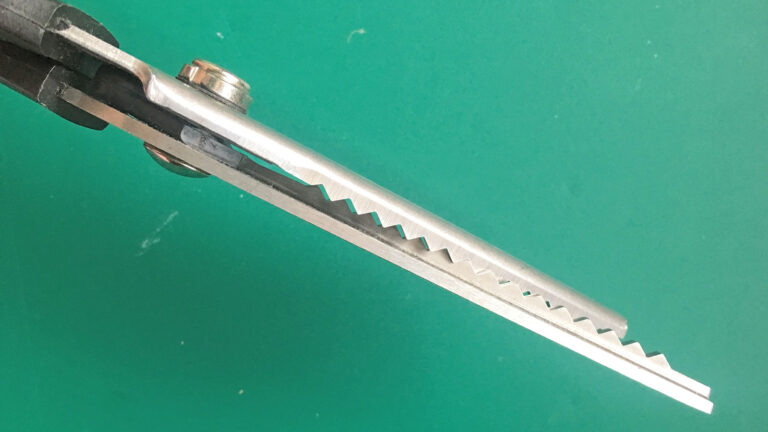2 Best Marking Tools In Sewing: What Should You Use To Mark fabric?
Wondering what you can use to mark fabric? This guide covers the different marking tools in sewing – I tested them for you! – so that you choose the right one for each project!
The fabric marking tools you choose depends heavily on what you will be sewing – some will ruin your fabric, others just won’t work with certain fabrics.
Whether you’re a ready to wear sewist or planning to learn couture sewing techniques for some slow sewing projects, the tools you choose to mark your fabric will have an impact on the outcome of your project.
Below I’m going to show you the different types of fabric marking tools you can use, and will be comparing a selection of the more newer tools too!
List Of Fabric Marking Tools

Let’s start by looking at the marking tools and their uses! There are many, which I’ll list out below, and then I’ll be sharing my three favourites for marking fabric, and why!
An overview list is:
- Air soluble marker
- Carbon paper and tracing wheel
- Chalk wheel
- Chalk pencil / pen
- Frixion pen
- Tailors chalk
- Tailors tacks
- Tailors wax
- Water soluble fabric pen
Air Soluble Marker

A marker that ‘dissolves’ with air, this is a great marking tool as it requires little effort to remove.
Carbon Paper And Tracing Wheel

This is an old school method, which I personally find quite fussy. Yes I love using my tracing wheel, but the whole carbon paper / tracing method is just an extra step holding me back from actually sewing.
Chalk Wheel
This is similar to a tailors chalk, but instead of a solid block of chalk, there’s powdered chalk inside a container, and you wheel it along to leave a trail of chalk behind. Simple and effective.
Chalk Pencil / Pen
Its also possible to use chalk in a pencil or pen format now! These are not as easy to use as a chalk wheel, but are still great.
Frixion Pen

These have been on the up and up in the UK for a while – kids love using them for correcting homework – but are they really useful for marking your fabric before sewing?
Frixion pens actually do work well on tightly woven fabrics. Although there is a ‘mark’ left behind once ‘rubbed out’ with the friction tip, when washed the line is barely visible.
These would be great for tightly woven cottons and other fabrics that are tightly woven with a non-textured surface!
Tailors Chalk

This has – and probably always will be – my fabric fabric marking tool. A piece of solid chalk, in the shape of a triangle, it’s easy to hold, easy to use, and easy to remove.
I love that the chalk is available in different colors – this is perfect when working on fabrics that are similar to the standard white chalk – grab the red or blue!
Tailors Tacks
A more time consuming method for marking fabric, tailors tacks are hand sewn stitches that are then cut to leave a thread line in place when the sewing pattern is removed.
Tailors Wax

Wax is hard to remove, so I do recommend using tailors wax on the wrong side of your fabric. I have a tailors wax pencil, and it is the one marking tool that consistently leaves behind a visible mark after washing and pressing.
Water Soluble Fabric Pen

As the name suggests, a water soluble fabric pen will dissolve when water is applied.
Make sure that you test the pen on a scrap of your chosen fabric before using so that you don’t accidentally damage your main fabric!
A Comparison Test Of Four Fabric Marking Tools

In order to provide you with real life use information, I purchased a selection of newer fabric marking pens so that I could test them for you:
- Clover washable marking pen
- Hancocks tailors wax pencil
- Pilot Frixion pen
- Prym Trickmarker
Hancocks Tailors Wax Pencil

I started by drawing two lines on a piece of tightly woven cotton fabric using the tailors wax pencil from Hancocks. The first line was freehand, the second using a ruler, so that I could press a little more forcefully. The aim being to see whether the extra pressure would permanently mark the fabric.
Clover Washable Marking Pen

Next I marked the fabric with Clover’s white marking pen in ‘fine’. This pen is supposedly washable. I have to be honest, at first I thought the pen was defective. As you can see from the above photo, there’s no visible fine white line at the point of marking the cotton fabric.
Pilot Frixion Pen

The black Frixion pen from Pilot was next to text out. I couldn’t get this pen in a pale color, so black it was. Its another fine tipped pen, like the clover pen before, the idea behind using this pen to mark fabric is that it can be ‘rubbed away’ with the friction tip when ready.
Prym Trickmarker

The final fabric marking pen in this test is the Trickmaster pen from Prym. This pen is a purple-blue in colour, and is air soluble, meaning the ink will naturally evaporate over time.
The Two Winning Fabric Marking Tools!
Now, do bare in mind that these four pens were tested on a tightly woven cotton, and had I also ran a test on a lightweight sheer fabric or a heavy weight fabric like canvas or wool, the outcome could be very different.
Whichever fabric marking tool you use, always test on a scrap piece of fabric first.
As you can see from the below photo, all four fabric pens and pencils tested in this experiment ended up marking the fabric in a clear, easy to see way. My concerns about the Clover washable pen being defective were unfounded. As time progressed, the line became more white and visible.

I started by erasing the Frixion pen. It was effective. While the black ink has been removed, there is a very faint imprint left behind.

With the air pen from Prym stating it would disappear in a few days, I decided to see whether a bit of heat applied to it would ‘dissolve’ it faster.

I can conclusively say that it didn’t. But it did appear to help the cover washable pen ‘fade’ (it’s the middle line).

I left the fabric overnight to see whether the Prym pen would evaporate and – it did! It also left behind no residue! We’re now left with the remains of the water soluble Clover pen, and the two lines from Hancock’s wax pencil. Off to wash the fabric!

Finally, we have a result! As you can see in the photo below, the only lines visible after washing and pressing the fabric are the ‘oily residue’ of the Clover ink pen and the impression left behind from the Pilot Frixion pen.

Concluding Thoughts On Fabric Marking Pens
As stated at the start, I love tailors chalk. Always have, always will. But having conducted this experiment, its safe for me to say that there’s also a place in my kit for two new fabric marking tools:
- Hancocks tailors wax pencil – dissolved away beautifully in a little wash with soap!
- Prym’s Trickmaster pen – it disappeared like magic overnight, and left no trace of its existence!
I love that they’re different colours too, so I have one for light colored fabrics and one for darker colored fabrics!
I hope that you found this comparison and experiment helpful – let me know in the comments which fabric marking tools you love to use and why!
Check out my other posts about tools:






